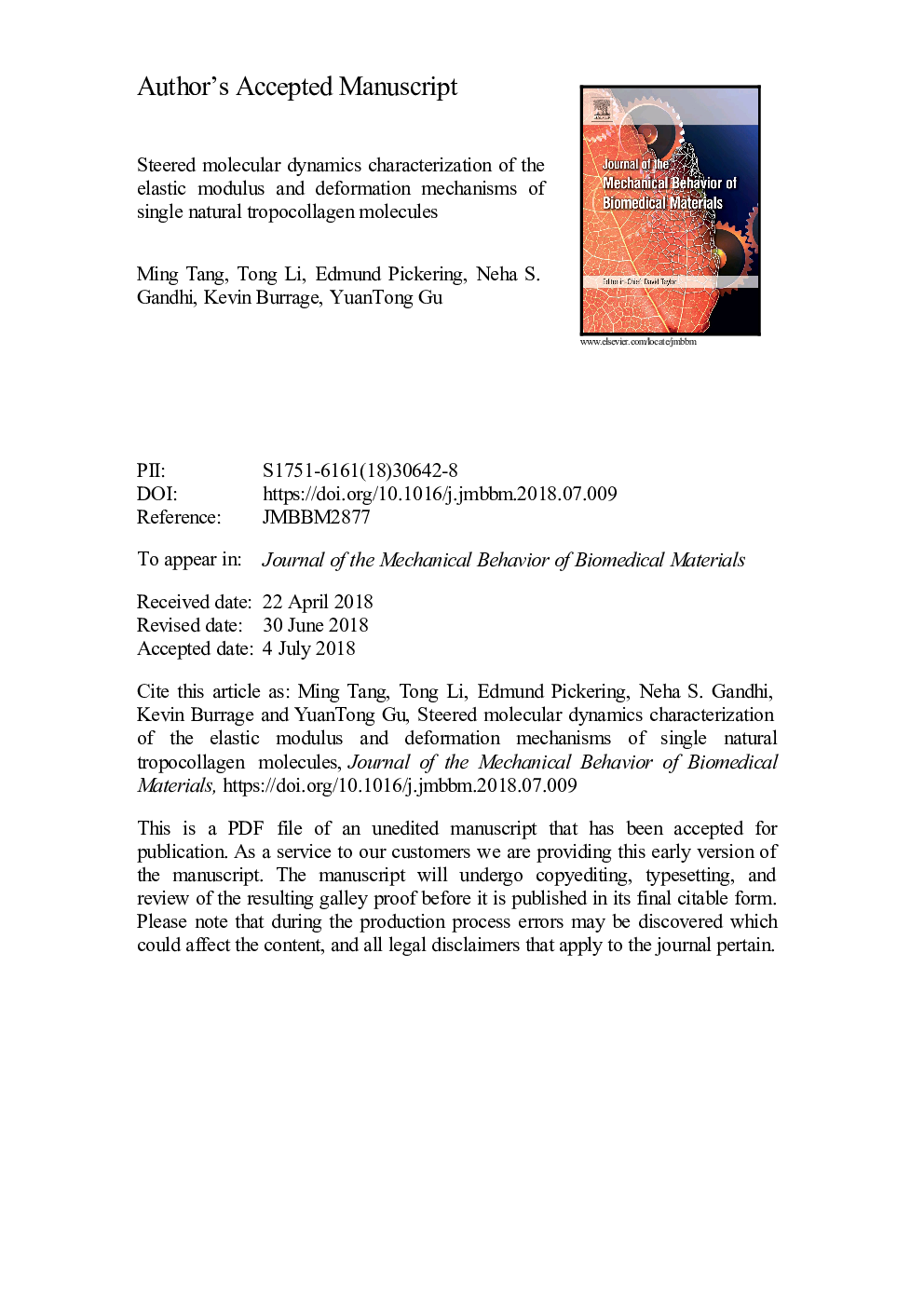| کد مقاله | کد نشریه | سال انتشار | مقاله انگلیسی | نسخه تمام متن |
|---|---|---|---|---|
| 7206929 | 1469059 | 2018 | 30 صفحه PDF | دانلود رایگان |
عنوان انگلیسی مقاله ISI
Steered molecular dynamics characterization of the elastic modulus and deformation mechanisms of single natural tropocollagen molecules
ترجمه فارسی عنوان
مشخصه پویایی مولکولی هدایت شده از مدول الاستیک و مکانیزم های تغییر شکل مولکول های تک مولکولی طبیعی
دانلود مقاله + سفارش ترجمه
دانلود مقاله ISI انگلیسی
رایگان برای ایرانیان
کلمات کلیدی
موضوعات مرتبط
مهندسی و علوم پایه
سایر رشته های مهندسی
مهندسی پزشکی
چکیده انگلیسی
Collagen is a common structural protein, providing mechanical integrity for various vertebrate connective tissues such as cartilage and bone. The mechanical behaviours of these tissues under physical stimulations are controlled by the hierarchical structure of collagen and its interactions with other extracellular matrix molecules. However, the mechanical properties and deformation mechanisms of natural collagen under physiological loading rates at the molecular level are not fully understood. In this study, comprehensive steered molecular dynamics (SMD) simulations were performed on the 2nd intact overlap region (d2ol) and the 2nd intact D-period (d2olgp) of an in-situ characterized collagen molecule, under a large range of strain rates (6.5â¯Ãâ¯106% sâ1 to 1.3â¯Ãâ¯1012% sâ1). The results show that, depending on the applied strain rates, tropocollagen molecules unfold in different ways. Particularly, at high and intermediate strain rates, the number of inter-chain hydrogen bonds decreases rapidly even at small deformations, leading to a dramatic increase in the force. This results in an increase in the estimated Young's modulus of collagen triple helices as the deformation rate goes up, which, together with the nonlinear mechanical behaviour, explains the broad range of the Young's modulus for collagen model peptides reported in earlier SMD studies. Atomistic-level analyses indicate that the elastic modulus of single tropocollagen molecules decreases as the strain rate becomes smaller. However, for strain rates below 1.3â¯Ãâ¯108% sâ1, the tangent Young's modulus of d2ol (d2olgp) converges to approximately 3.2â¯GPa (3.4â¯GPa), at the strain of 10.5% (12%) when the segment is fully uncrimped. Furthermore, for strain rates under 1.3â¯Ãâ¯108% sâ1, d2ol and d2olgp show identical deformation mechanisms (unwinding, uncoiling and backbone stretching), but the corresponding strain ranges are different. This study will aid in future studies on characterizing the mechanical properties of collagen molecules and collagen-like peptides by indicating the proper pulling strain rates and how to determine the suitable strain range used for evaluating the elastic modulus.
ناشر
Database: Elsevier - ScienceDirect (ساینس دایرکت)
Journal: Journal of the Mechanical Behavior of Biomedical Materials - Volume 86, October 2018, Pages 359-367
Journal: Journal of the Mechanical Behavior of Biomedical Materials - Volume 86, October 2018, Pages 359-367
نویسندگان
Ming Tang, Tong Li, Edmund Pickering, Neha S. Gandhi, Kevin Burrage, YuanTong Gu,
